Top 10 attractions to visit in Tiraspol
Tiraspol is the capital city of the breakaway region of Transnistria in Moldova. It is located on the eastern bank of the Dniester River and has a population of around 150,000 people. Tiraspol is known for its Soviet-era architecture and monuments, including a statue of Lenin in the city center. The city has a unique political status, as it is not internationally recognized as an independent state but functions as the administrative center of Transnistria. It offers visitors a glimpse into a region with a distinct cultural identity and complex political situation. If you are planning to visit , here are the top 10 attractions.
1. The Suvorov Monument: Located in the heart of the city, this impressive statue commemorates the Russian military commander Alexander Suvorov. It offers panoramic views of the surroundings and serves as a symbol of the city’s Russian influence.
2. The House of Soviets: This iconic building is a must-visit for history enthusiasts. Originally built as a governmental complex, it now houses the Transnistrian Parliament. The architecture is reminiscent of the Soviet era and provides insight into the city’s political landscape.
3. Dniester River: Take a leisurely stroll along the picturesque banks of the Dniester River. Enjoy the tranquility and natural beauty while immersing yourself in the local ambiance. Don’t miss the opportunity to capture beautiful photos from one of the numerous observation decks along the way.
4. Kvint Distillery and Winery: Discover the art of winemaking at the famous Kvint Distillery and Winery. Known for its world-class brandies and wines, take a guided tour to learn about the production process and indulge in tastings of their finest creations.
5. Bender Fortress: Just a short distance from Tiraspol, the Bender Fortress is a historic landmark that dates back to the medieval period. Take a tour and explore the well-preserved ruins, ancient citadel, and the impressive defensive walls.
6. Victory Park: This serene park is dedicated to the memory of World War II heroes. Take a break from the bustling city and enjoy the peaceful atmosphere, beautiful green spaces, and various memorials honoring those who sacrificed their lives.
7. Transnistrian Moldavian Republic State Museum: Step back in time and learn about the rich cultural heritage of Transnistria at this fascinating museum. From archaeological artifacts to Soviet-era memorabilia, immerse yourself in the region’s history, art, and traditions.
Make the most of your visit to Tiraspol and experience the historical, cultural, and natural beauty that this vibrant city has to offer. Whether you’re a history buff, nature lover, or simply seeking a unique travel experience, Tiraspol won’t disappoint!
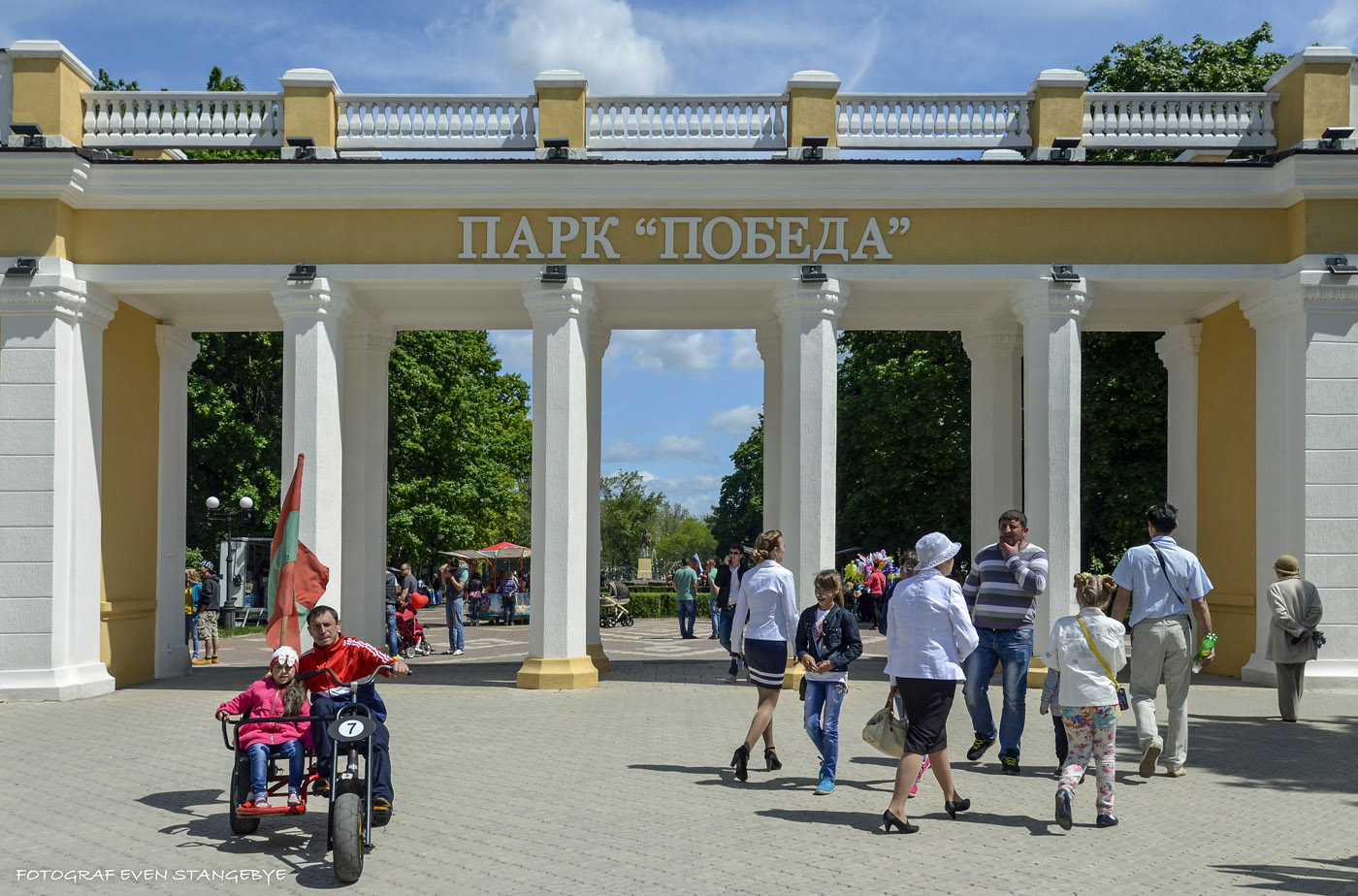
Victory Park
Victory Park is a public park located in Tiraspol, the capital city of the internationally unrecognized Republic of Transnistria. It was established in 1971 to commemorate the 30th anniversary of Victory in World War II.
The park is a significant place for the local community and serves as a tribute to those who participated in the war. It features various monuments, sculptures, and memorials that honor the bravery and sacrifices made by soldiers and civilians during the war.
One of the main attractions in Victory Park is the towering Monument to the Fallen during the Great Patriotic War, which stands at an impressive height of 41.5 meters (136 feet). The monument depicts a soldier holding a sword, and at the base, there is an eternal flame that serves as a symbol of remembrance.
Another notable feature of the park is the Tank Monument, which displays a Soviet T-34 tank on a platform. This tank, which was widely used by the Soviets during World War II, represents the military strength and resilience of the Soviet Union during the conflict.
Apart from the monuments, the park offers serene walking paths, lush greenery, and beautiful flower beds. It is a popular place among locals and visitors alike, especially during holidays and memorial events. There is also a children’s playground and a small amusement park within the vicinity.
Overall, Victory Park in Tiraspol serves as a place of reflection and remembrance for the people of Transnistria, honoring the memory of those who fought and sacrificed their lives during World War II.

2. Kvint Distillery –
The Kvint Distillery is a renowned spirits producer located in Tiraspol, the capital city of the unrecognised, self-proclaimed Transnistria Republic. It was founded in 1897 and has since gained global recognition for its high-quality products.
The distillery produces a wide range of alcoholic beverages, including brandies, vodkas, and liqueurs. However, its brandies are particularly renowned and have received numerous accolades in international competitions. Kvint brandies are made from carefully-selected grapes grown in Moldova’s fertile soil and aged for an extended period in oak barrels, allowing them to develop complex flavors and aromas.
Kvint brandies are available in various age categories, ranging from 3 to 50 years. Each age category offers a unique taste profile, with the older brandies displaying greater depth and complexity. The distillery also produces flavored brandies, such as cherry and honey-infused varieties, offering a different twist to the traditional brandy experience.
In addition to brandies, Kvint also produces a range of vodkas in different flavors, including traditional, wheat-based vodka, as well as flavored variants like lemon and cherry. The distillery’s liqueurs include popular choices like coffee, chocolate, and herbal varieties, appealing to a wide range of tastes.
Visitors to the Kvint Distillery can take guided tours to learn about the history and production process of their products. The tour typically includes a visit to the aging cellars, where the brandies mature in oak barrels, as well as a tasting session to sample some of Kvint’s finest spirits.
Kvint Distillery has gained global recognition for its craftsmanship and commitment to quality, making it a must-visit destination for spirit enthusiasts visiting Tiraspol or the wider region. We would highly recommend a guided tour of Kvint Distillery .
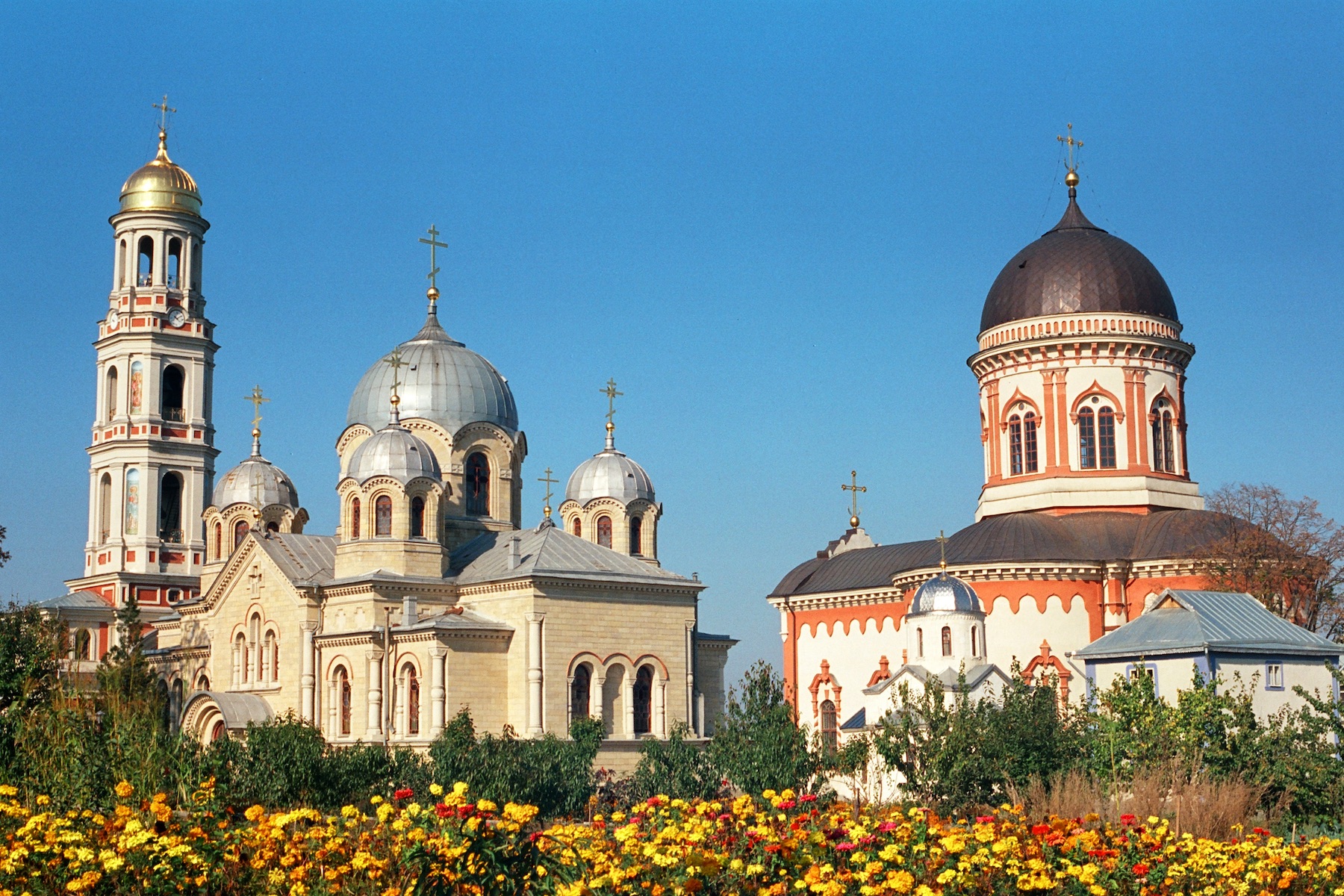
3. Noul Neamt Monastery –
Noul Neamt Monastery is a beautiful and historic monastery located in the Republic of Moldova. It is situated near the village of Chiţcani, about 25 kilometers north of the capital city, Chişinău. The monastery is one of the most prominent religious and cultural landmarks in the country.
Noul Neamt Monastery was founded in 1861 and is dedicated to the Ascension of Jesus. It was built in the Moldovan Orthodox architectural style and features stunning frescoes and ornate decorations. The monastery is known for its peaceful and serene atmosphere, attracting both religious pilgrims and tourists looking for a meditative escape.
The complex of Noul Neamt Monastery includes several buildings, such as the main church, the bell tower, and residential quarters for the monks. The main church, painted in beautiful colors, is the main attraction of the monastery. The interior is adorned with exquisite frescoes depicting scenes from the Bible and the lives of saints.
The monastery is surrounded by well-maintained gardens and orchards, providing a tranquil environment for visitors. The grounds also feature a cemetery, where several notable people are buried, including religious leaders and historical figures.
Noul Neamt Monastery holds great significance in Moldova’s religious and cultural heritage. It has been a place of worship and spiritual retreat for centuries, preserving the Orthodox traditions and attracting pilgrims from all over the world. The monastery is also involved in charitable activities, providing support to the local community and hosting cultural events.
Visitors to Noul Neamt Monastery can enjoy guided tours, attend religious services, and explore the surrounding area. The monastery offers a unique opportunity to experience the rich history and spirituality of Moldova.
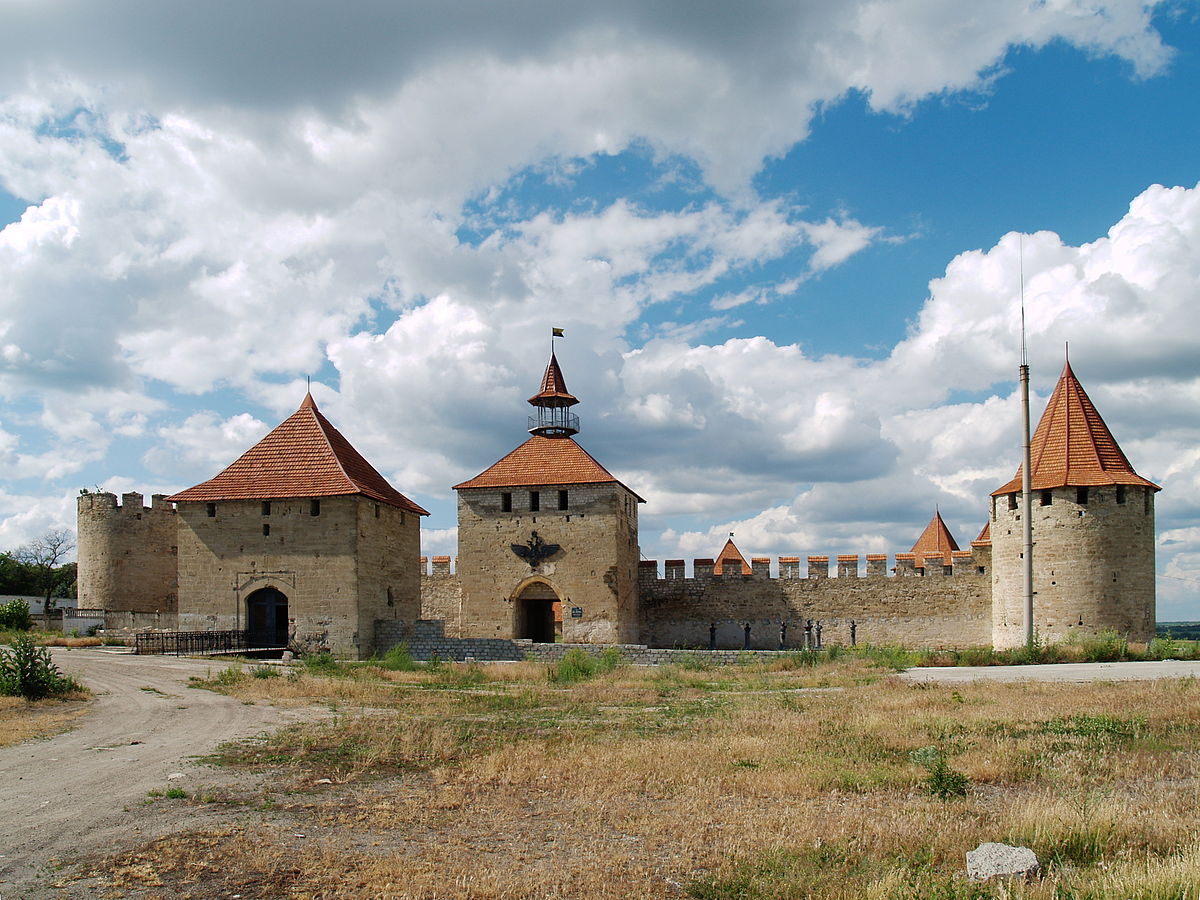
4. Bender Fortress –
Bender Fortress is a historical site that dates back to the medieval period. It was initially constructed in the 16th century and played a significant role in various conflicts throughout history. The fortress served as a strategic stronghold along the Dniester River and was controlled by different powers over the years, including the Ottoman Empire, Russian Empire, and Moldavian Principality.
The fortress consists of several towers and defensive walls, which were built to protect the town of Bender and its surrounding areas. It witnessed numerous battles and sieges, often changing hands between different forces.
Today, Bender Fortress is a popular tourist attraction and a symbol of the region’s rich history. Visitors can explore the ruins, walk along the fortress walls, and learn about its historical significance through exhibits and guided tours. The surrounding area offers picturesque views of the Dniester River and the city of Bender.
Keep in mind that Transnistria is a politically sensitive region, and travel to this area may require additional considerations such as obtaining a visa or adhering to specific regulations. It’s advisable to consult with official travel resources or local authorities before planning any visit.
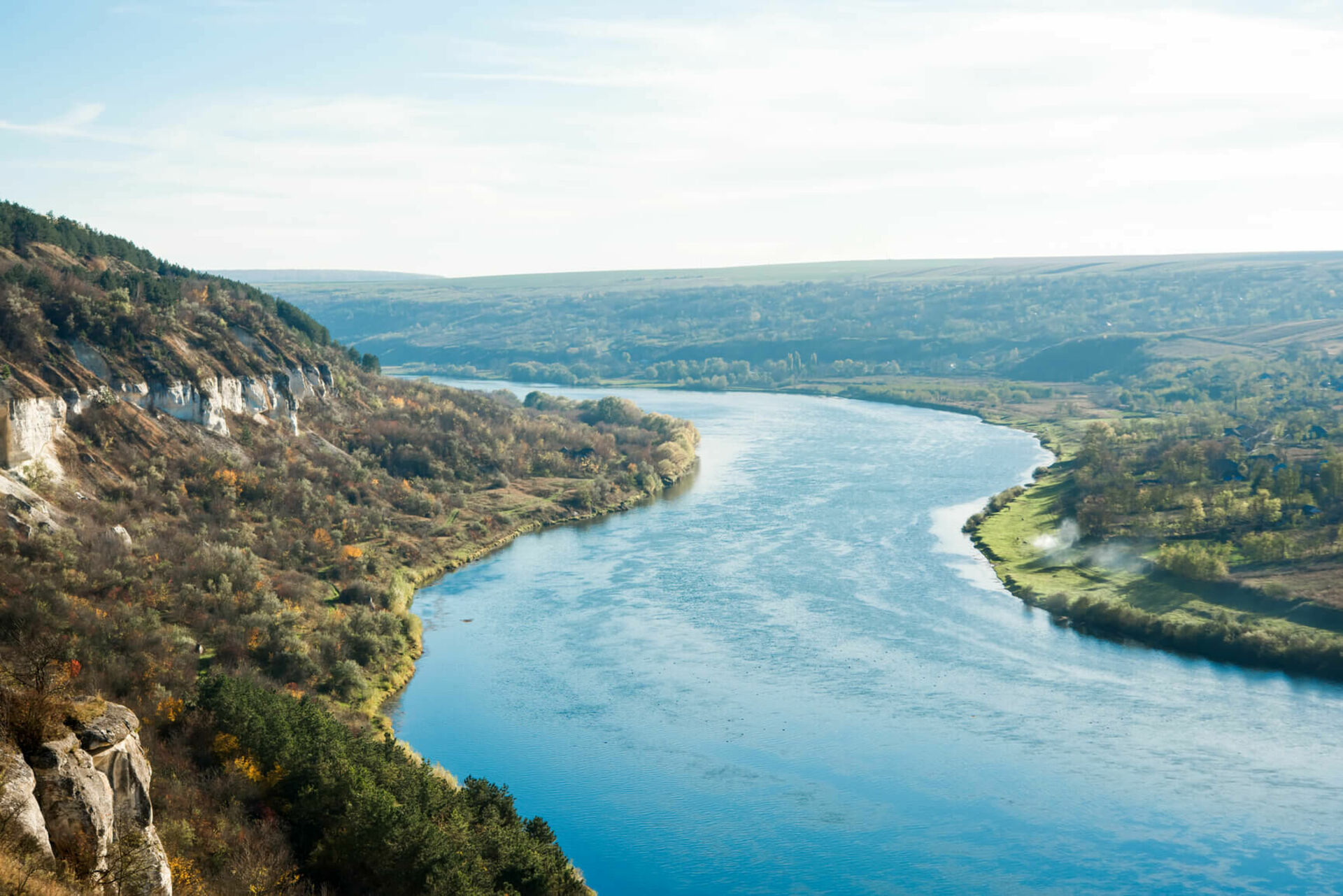
5. Dniestr River –
Dniester River, known as one of the most prominent natural attractions in Tiraspol, Moldova, offers a perfect blend of scenic beauty and historical significance. Flowing through the heart of the city, the river provides an enchanting backdrop for both locals and tourists alike.
One of the top attractions along the Dniester River is the beautiful Waterfront Park. With its well-manicured lawns, colorful flower beds, and picturesque views of the river, this park offers a tranquil retreat for visitors. Tourists can also enjoy leisurely walks, jogging, or cycling along the scenic riverfront promenade, while admiring the breathtaking landscapes.
Another must-visit landmark along the Dniester River is the Old Bridge. Built in the late 18th century, this architectural marvel is not only a functional piece of infrastructure but also a historic symbol of the city. Crossing the bridge provides an opportunity to capture stunning panoramic views of the river and the surrounding landscapes.
Adventure seekers can indulge in various water activities such as kayaking, canoeing, or river cruises along the Dniester River. These activities allow tourists to explore the river and its hidden treasures, including picturesque islands and secret beaches.
For history enthusiasts, the Dniester River offers a glimpse into the region’s past. The river played a significant role during the Second World War, witnessing numerous historic events. Exploring the riverbanks may lead to intriguing discoveries, such as remnants of fortifications or war memorials.
The Dniester River also offers a unique opportunity to immerse oneself in nature. The river is home to diverse flora and fauna, making it a haven for birdwatching enthusiasts. During the migratory season, visitors can observe various bird species along the riverbanks.
To make the most of your visit to Tiraspol and explore the Dniester River, it is advisable to plan a trip during the spring or summer months when the weather is pleasant and conducive to outdoor activities. Additionally, ensure to pack comfortable walking shoes, sunscreen, and a camera to capture the beauty of the river and its surroundings.
Overall, the Dniester River in Tiraspol, Moldova offers visitors an unforgettable experience with its blend of natural beauty, historic significance, and recreational activities. Whether you are a nature lover, history buff, or simply looking for a peaceful retreat, exploring the top attractions along the Dniester River is a must during your visit to Tiraspol.
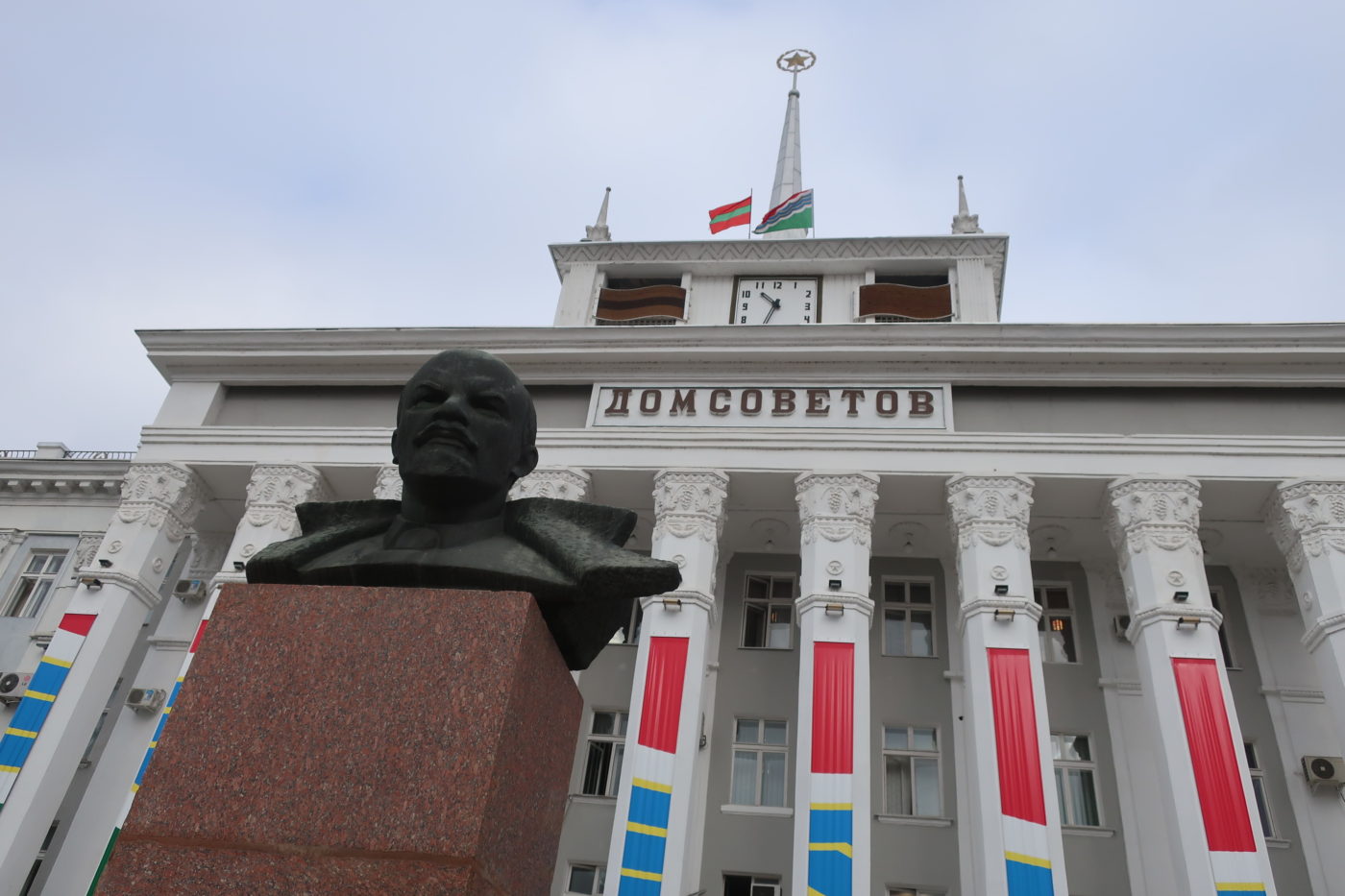
6. House of Soviets –
The House of Soviets in Tiraspol is a prominent architectural landmark in the capital city of the self-proclaimed Pridnestrovian Moldavian Republic (Transnistria). It was envisioned as a government building and was constructed during the Soviet era in the 1970s. The building was intended to be the headquarters for the local soviet and other government bodies.
Designed in a classic Soviet architectural style, the House of Soviets features a grand and imposing façade. It is a nine-story building with a central tower that stands at a height of approximately 67 meters. The tower is topped with a large red star, which is a common symbol of Soviet architecture.
The interior of the building is known for its spacious halls and columns, decorated with marble and other ornate materials. However, following the collapse of the Soviet Union, the building was left unfinished and incomplete due to lack of funds.
Currently, the House of Soviets serves as the parliament building for the unrecognized Pridnestrovian Moldavian Republic. It houses the Supreme Council (parliament) and various government offices. Despite its incomplete state, the building remains an iconic symbol of the region and attracts visitors due to its historical and architectural significance.
Book a Tour in Tiraspol

7. Memorial of Military Glory –
The Memorial of Military Glory is one of the top attractions in Tiraspol, Moldova. This historical landmark commemorates the brave soldiers who fought during World War II. Located in the city center, the memorial stands as a symbol of strength and resilience.
The memorial features a massive granite obelisk adorned with a bronze eternal flame, representing the eternal memory of those who sacrificed their lives for their country. Surrounding the obelisk are beautifully landscaped gardens and a pristine park, providing visitors with a serene atmosphere for reflection.
Visitors can explore the memorial site and pay homage to the fallen soldiers by observing the various plaques and monuments that honor their bravery. The site also includes a museum, which showcases a collection of artifacts and photographs depicting the events of the war.
Apart from its historical significance, the Memorial of Military Glory offers breathtaking views of the city, making it an ideal spot for photographers and nature enthusiasts. It is common for visitors to spend some time here to take in the peaceful surroundings and appreciate the architectural beauty of the memorial.
Whether you are a history buff or simply looking for a place to relax and reflect, the Memorial of Military Glory is a must-visit attraction in Tiraspol, Moldova. Its rich history, stunning architecture, and serene ambiance make it an unforgettable experience for every visitor.
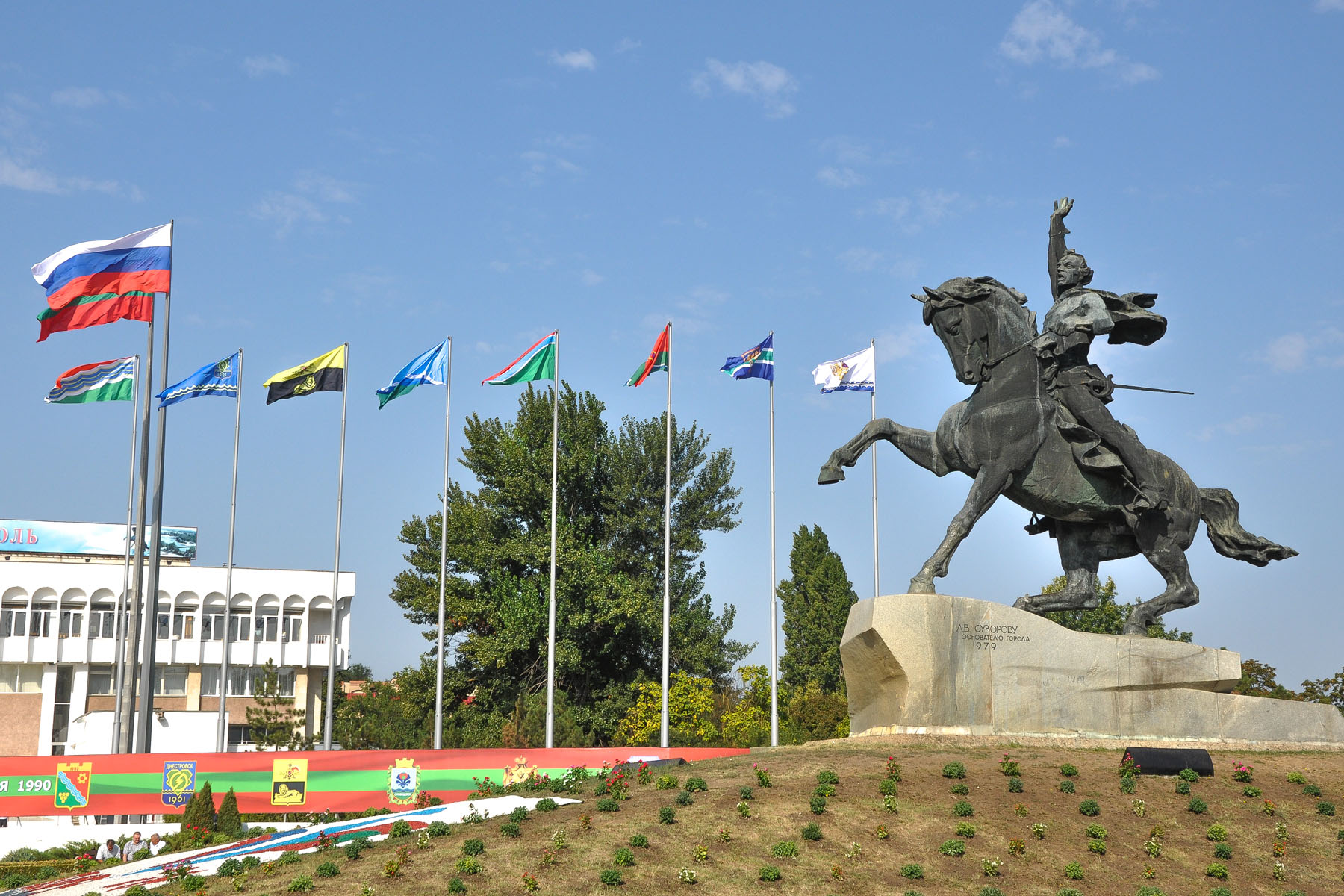
8. Alexander Suvorov Statue –
The Alexander Suvorov Statue in Tiraspol is a prominent landmark in the city of Tiraspol, which is the capital of the unrecognized breakaway region of Transnistria within Moldova. The statue honors Alexander Suvorov, a renowned Russian military leader and national hero who played a significant role in the history of the Russian Empire.
The statue is located in the main square of Tiraspol, known as 25th October Square. It was unveiled in 1979, during the Soviet era, to commemorate the 200th anniversary of Suvorov’s birth. The bronze statue stands on a marble pedestal and depicts Suvorov in a military uniform, holding a sword in one hand and pointing forward with the other.
Alexander Suvorov is particularly revered in the region for his successful military campaigns, including his involvement in the Russo-Turkish War (1787-1792) and the Italian and Swiss campaigns (1799). His military tactics and leadership skills earned him the title of “Generalissimo” and “the Russian Hannibal.” Suvorov is celebrated as a symbol of courage, discipline, and military excellence.
The statue serves as a reminder of the historical ties between Transnistria and Russia, given Suvorov’s role in Russian military history. It also reflects the cultural and political identity of the region, which has a predominantly Russian-speaking population.
Despite the unrecognized status of Transnistria and ongoing territorial disputes, the Alexander Suvorov Statue remains an important symbol of pride and identity for the people of Tiraspol and a significant attraction for visitors to the city. We would highly recommend a walking tour in Tiraspol.

9. Pushkin Park –
Pushkin Park is a well-known park located in the city of Tiraspol, which is the capital of the breakaway region of Transnistria. The park is named after Alexander Pushkin, the famous Russian poet, and writer.
Pushkin Park is a popular recreational and leisure spot for both locals and tourists. It covers a large area with beautiful green spaces, numerous trees, and flower beds. The park features well-maintained paths for walking and jogging, making it a favorite spot for outdoor activities and exercise.
There are also several attractions and amenities within the park. One of the main focal points is a monument dedicated to Alexander Pushkin himself. It is a large bronze statue depicting the poet in a seated position, surrounded by a pedestal with inscriptions about his life and works.
Pushkin Park is also home to the Pushkin Amphitheatre, an open-air theater that hosts various cultural events, concerts, and performances during the summer months. The amphitheater provides a comfortable seating area and excellent acoustics for spectators to enjoy the shows.
Additionally, the park offers recreational facilities for children, including playgrounds with swings, slides, and other fun equipment. There are also several cafes and restaurants where visitors can relax and enjoy refreshments.
Overall, Pushkin Park in Tiraspol is a pleasant and tranquil place for people to unwind, enjoy outdoor activities, and appreciate the beauty of nature. It is a significant landmark in the city, attracting both locals and tourists who seek a peaceful respite from the urban bustle.

10. St. George’s Cathedral (Bendery) –
St. George’s Cathedral in Bendery is one of the top attractions in Tiraspol, Moldova. This magnificent Orthodox church stands as a symbol of religious and architectural grandeur in the heart of the city.
Built in the early 19th century, St. George’s Cathedral boasts a stunning neo-Byzantine architectural style, characterized by its intricate details and impressive dome. The cathedral’s exterior is adorned with vibrant frescoes and colorful mosaics, which add to its overall visual appeal.
Inside, visitors will find a serene and peaceful atmosphere, along with beautiful religious artwork and Orthodox iconography. The cathedral also houses several significant relics and artifacts of religious importance, including ancient icons and religious scriptures.
Aside from its religious significance, St. George’s Cathedral offers panoramic views of the surrounding landscape from its bell tower. From the top, visitors can enjoy breathtaking vistas of Bendery and its neighboring regions.
Located close to the city center, St. George’s Cathedral is easily accessible for tourists. The close proximity to other attractions, such as the Bendery Fortress and the Dniester River, makes it a convenient stop for travelers exploring the area.
Whether you are a history enthusiast, an admirer of religious architecture, or simply seeking a serene place of worship, a visit to St. George’s Cathedral is a must when in Tiraspol, Moldova. Immerse yourself in the rich cultural heritage and marvel at the beauty of this architectural gem.
Book a Tour of Tiraspol
.
.

Bryn Jacobs Chief Editor
Hello dear Travelers! I am Bryn Jacobs and I am your travel advisor. Having a vast experience in traveling throughout Eastern Europe and having researched this part of the world myself. I write articles on the site about travel experiences in Eastern Europe with statistics and interesting facts.


[…] Transnistria, formally known as the Pridnestrovian Moldavian Republic, is a breakaway territory, self-proclaimed independent from Moldova, but yet unacknowledged by the international community. As a result, visitors can expect an intriguing blend of Soviet nostalgia, unique cultural experiences, and a glimpse into a region with a fiercely preserved identity. Check out the top 10 attractions in Transnistria. […]